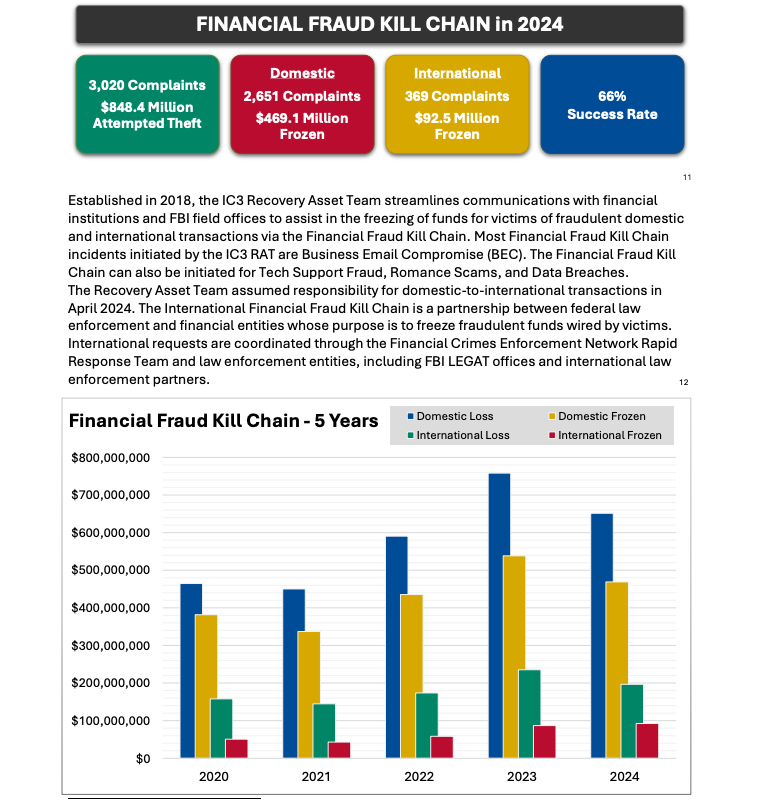The current state of digital identity is a mess. Your personal information is scattered across hundreds of locations: social media companies, IoT companies, government agencies, websites you have accounts on, and data brokers you’ve never heard of. These entities collect, store, and trade your data, often without your knowledge or consent. It’s both redundant and inconsistent. You have hundreds, maybe thousands, of fragmented digital profiles that often contain contradictory or logically impossible information. Each serves its own purpose, yet there is no central override and control to serve you—as the identity owner.
We’re used to the massive security failures resulting from all of this data under the control of so many different entities. Years of privacy breaches have resulted in a multitude of laws—in US states, in the EU, elsewhere—and calls for even more stringent protections. But while these laws attempt to protect data confidentiality, there is nothing to protect data integrity.
In this context, data integrity refers to its accuracy, consistency, and reliability…throughout its lifecycle. It means ensuring that data is not only accurately recorded but also remains logically consistent across systems, is up-to-date, and can be verified as authentic. When data lacks integrity, it can contain contradictions, errors, or outdated information—problems that can have serious real-world consequences.
Without data integrity, someone could classify you as a teenager while simultaneously attributing to you three teenage children: a biological impossibility. What’s worse, you have no visibility into the data profiles assigned to your identity, no mechanism to correct errors, and no authoritative way to update your information across all platforms where it resides.
Integrity breaches don’t get the same attention that confidentiality breaches do, but the picture isn’t pretty. A 2017 write-up in The Atlantic found error rates exceeding 50% in some categories of personal information. A 2019 audit of data brokers found at least 40% of data broker sourced user attributes are “not at all” accurate. In 2022, the Consumer Financial Protection Bureau documented thousands of cases where consumers were denied housing, employment, or financial services based on logically impossible data combinations in their profiles. Similarly, the National Consumer Law Center report called “Digital Denials” showed inaccuracies in tenant screening data that blocked people from housing.
And integrity breaches can have significant effects on our lives. In one 2024 British case, two companies blamed each other for the faulty debt information that caused catastrophic financial consequences for an innocent victim. Breonna Taylor was killed in 2020 during a police raid on her apartment in Louisville, Kentucky, when officers executed a “no-knock” warrant on the wrong house based on bad data. They had faulty intelligence connecting her address to a suspect who actually lived elsewhere.
In some instances, we have rights to view our data, and in others, rights to correct it, but these sorts of solutions have only limited value. When journalist Julia Angwin attempted to correct her information across major data brokers for her book Dragnet Nation, she found that even after submitting corrections through official channels, a significant number of errors reappeared within six months.
In some instances, we have the right to delete our data, but—again—this only has limited value. Some data processing is legally required, and some is necessary for services we truly want and need.
Our focus needs to shift from the binary choice of either concealing our data entirely or surrendering all control over it. Instead, we need solutions that prioritize integrity in ways that balance privacy with the benefits of data sharing.
It’s not as if we haven’t made progress in better ways to manage online identity. Over the years, numerous trustworthy systems have been developed that could solve many of these problems. For example, imagine digital verification that works like a locked mobile phone—it works when you’re the one who can unlock and use it, but not if someone else grabs it from you. Or consider a storage device that holds all your credentials, like your driver’s license, professional certifications, and healthcare information, and lets you selectively share one without giving away everything at once. Imagine being able to share just a single cell in a table or a specific field in a file. These technologies already exist, and they could let you securely prove specific facts about yourself without surrendering control of your whole identity. This isn’t just theoretically better than traditional usernames and passwords; the technologies represent a fundamental shift in how we think about digital trust and verification.
Standards to do all these things emerged during the Web 2.0 era. We mostly haven’t used them because platform companies have been more interested in building barriers around user data and identity. They’ve used control of user identity as a key to market dominance and monetization. They’ve treated data as a corporate asset, and resisted open standards that would democratize data ownership and access. Closed, proprietary systems have better served their purposes.
There is another way. The Solid protocol, invented by Sir Tim Berners-Lee, represents a radical reimagining of how data operates online. Solid stands for “SOcial LInked Data.” At its core, it decouples data from applications by storing personal information in user-controlled “data wallets”: secure, personal data stores that users can host anywhere they choose. Applications can access specific data within these wallets, but users maintain ownership and control.
Solid is more than distributed data storage. This architecture inverts the current data ownership model. Instead of companies owning user data, users maintain a single source of truth for their personal information. It integrates and extends all those established identity standards and technologies mentioned earlier, and forms a comprehensive stack that places personal identity at the architectural center.
This identity-first paradigm means that every digital interaction begins with the authenticated individual who maintains control over their data. Applications become interchangeable views into user-owned data, rather than data silos themselves. This enables unprecedented interoperability, as services can securely access precisely the information they need while respecting user-defined boundaries.
Solid ensures that user intentions are transparently expressed and reliably enforced across the entire ecosystem. Instead of each application implementing its own custom authorization logic and access controls, Solid establishes a standardized declarative approach where permissions are explicitly defined through control lists or policies attached to resources. Users can specify who has access to what data with granular precision, using simple statements like “Alice can read this document” or “Bob can write to this folder.” These permission rules remain consistent, regardless of which application is accessing the data, eliminating the fragmentation and unpredictability of traditional authorization systems.
This architectural shift decouples applications from data infrastructure. Unlike Web 2.0 platforms like Facebook, which require massive back-end systems to store, process, and monetize user data, Solid applications can be lightweight and focused solely on functionality. Developers no longer need to build and maintain extensive data storage systems, surveillance infrastructure, or analytics pipelines. Instead, they can build specialized tools that request access to specific data in users’ wallets, with the heavy lifting of data storage and access control handled by the protocol itself.
Let’s take healthcare as an example. The current system forces patients to spread pieces of their medical history across countless proprietary databases controlled by insurance companies, hospital networks, and electronic health record vendors. Patients frustratingly become a patchwork rather than a person, because they often can’t access their own complete medical history, let alone correct mistakes. Meanwhile, those third-party databases suffer regular breaches. The Solid protocol enables a fundamentally different approach. Patients maintain their own comprehensive medical record, with data cryptographically signed by trusted providers, in their own data wallet. When visiting a new healthcare provider, patients can arrive with their complete, verifiable medical history rather than starting from zero or waiting for bureaucratic record transfers.
When a patient needs to see a specialist, they can grant temporary, specific access to relevant portions of their medical history. For example, a patient referred to a cardiologist could share only cardiac-related records and essential background information. Or, on the flip side, the patient can share new and rich sources of related data to the specialist, like health and nutrition data. The specialist, in turn, can add their findings and treatment recommendations directly to the patient’s wallet, with a cryptographic signature verifying medical credentials. This process eliminates dangerous information gaps while ensuring that patients maintain an appropriate role in who sees what about them and why.
When a patient—doctor relationship ends, the patient retains all records generated during that relationship—unlike today’s system where changing providers often means losing access to one’s historical records. The departing doctor’s signed contributions remain verifiable parts of the medical history, but they no longer have direct access to the patient’s wallet without explicit permission.
For insurance claims, patients can provide temporary, auditable access to specific information needed for processing—no more and no less. Insurance companies receive verified data directly relevant to claims but should not be expected to have uncontrolled hidden comprehensive profiles or retain information longer than safe under privacy regulations. This approach dramatically reduces unauthorized data use, risk of breaches (privacy and integrity), and administrative costs.
Perhaps most transformatively, this architecture enables patients to selectively participate in medical research while maintaining privacy. They could contribute anonymized or personalized data to studies matching their interests or conditions, with granular control over what information is shared and for how long. Researchers could gain access to larger, more diverse datasets while participants would maintain control over their information—creating a proper ethical model for advancing medical knowledge.
The implications extend far beyond healthcare. In financial services, customers could maintain verified transaction histories and creditworthiness credentials independently of credit bureaus. In education, students could collect verified credentials and portfolios that they truly own rather than relying on institutions’ siloed records. In employment, workers could maintain portable professional histories with verified credentials from past employers. In each case, Solid enables individuals to be the masters of their own data while allowing verification and selective sharing.
The economics of Web 2.0 pushed us toward centralized platforms and surveillance capitalism, but there has always been a better way. Solid brings different pieces together into a cohesive whole that enables the identity-first architecture we should have had all along. The protocol doesn’t just solve technical problems; it corrects the fundamental misalignment of incentives that has made the modern web increasingly hostile to both users and developers.
As we look to a future of increased digitization across all sectors of society, the need for this architectural shift becomes even more apparent. Individuals should be able to maintain and present their own verified digital identity and history, rather than being at the mercy of siloed institutional databases. The Solid protocol makes this future technically possible.
This essay was written with Davi Ottenheimer, and originally appeared on The Inrupt Blog.
—————
Free Secure Email – Transcom Sigma
Boost Inflight Internet
Transcom Hosting
Transcom Premium Domains

